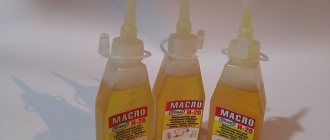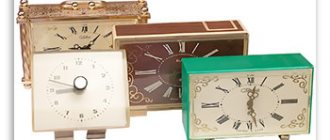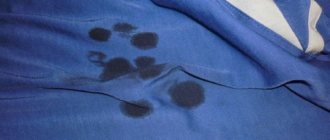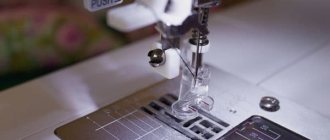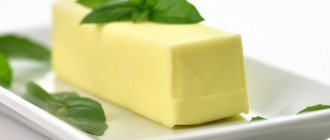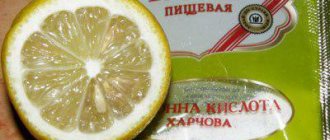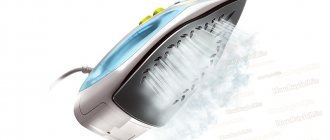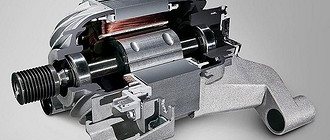My name is Igor, I am a sewing mechanic with 20 years
. I offer you a short article about cleaning and lubricating sewing equipment.
If you care for, clean and lubricate the main components and mechanisms of sewing machines, overlockers, cover stitching machines, and periodically carry out complete maintenance from specialists, then such equipment will last much longer.
At home, it is quite easy to clean and lubricate the shuttle mechanism (the main thing), the needle bar mechanism, and clean the teeth of the fabric conveyor. Both vertical and horizontal shuttle devices need to be lubricated. To make it more clear, I will give the types of shuttles
- (shuttle-bullet) - *grandmother's*, in old SINGER type machines, also in new ones.
- (crescent shuttle), sometimes called *oscillating* - the most common. Present in old machines (Chaika, Podolsk, Singer, etc.) and in new modern sewing machines (ELNA, Bernina, Janome, Singer, Brother, Pfaff, etc.)
- (the bobbin is placed on top, there is no bobbin case) - present on machines of all modern sewing companies.
- , sometimes called *double-running* - household sewing machines VERITAS, PFAFF, etc., industrial sewing machines.
Machines with vertical shuttle.
Cleaning and lubricating the shuttle.
Vertical swinging shuttles are most in need of cleaning and lubrication. Even in imported sewing machines.
Instructions:
- We take out the bobbin case.
- We move the latches (mostly plastic, black): left - left, right - right.
- Remove the locking ring and take out the crescent shuttle.
The most important thing is to thoroughly clean the grooves of the shuttle body from dust and dirt: the place where the shuttle rotates*
After cleaning, lubricate with oil (preferably transparent), the grooves of the shuttle body - 2-4 drops on the left and right. See photo:
Reassemble in reverse order.
Important: when assembling the vertical shuttle device, the needle bar and needle must be in the upper position. The crescent-moon shuttle pusher and the crescent-moon shuttle should look at each other (until a full circle).
What you need for work
To lubricate the machine correctly, you should prepare everything necessary for this. And you may need:
- Machine oil. You can buy it at any hardware store. Even 100 grams of oil will be enough for your head;
- Medical syringe. It is convenient for them to lubricate those parts of the machine that are difficult to get to without disassembling it;
- Brush. A small brush will do a great job of removing dust, dirt and old oil;
Important! This is exactly the set you need to perform high-quality professional cleaning conscientiously.
Machines with horizontal shuttle.
In the operating instructions for modern machines with a horizontal shuttle from some companies it is written that the shuttle does not need to be lubricated - it is lubricant-free. The Swedish concern HUSKVARNA is especially guilty of this. Accordingly, sellers of sewing equipment tell customers this: there is no need to lubricate the horizontal hook. A completely wrong position - any rotating and moving mechanism with bushings, hinges, gears - needs to be cleaned and lubricated! Perhaps sewing companies mean that this needs to be done in a service center by a specialist. In our conditions, this mostly does not work. (For example, the equipment is located in another city - far from the service center). It turns out like this: if they said there is no need to lubricate, so much the better - I’ll sew calmly... What happens next is serious damage and expensive repairs (sooner or later, depending on the amount of sewing). Of course, you can invite a specialist for maintenance, but he is not always available in a certain locality. Therefore, it is useful for the owner of the sewing machine to learn how to do all these simple tasks.
How often should you clean and lubricate?
If the sewing machine is new, then at first you need to lubricate it once every six months. When the device ages, lubrication is carried out every three months. This largely depends on the intensity of the work.
Hook lubrication
If a person uses a machine every day for several hours, it is necessary to constantly listen to it. If suddenly there are extraneous noises, knocking, creaking or rustling, this is a reason to disassemble it and clean it thoroughly, additionally applying a new portion of lubricants. This will prevent breakdowns and sudden failure of the sewing unit.
In addition to oil and a napkin, you will need a screwdriver
In conclusion, we can say that a sewing machine, no matter how high-quality it is, needs repair and maintenance. In order not to repair a broken component of an expensive product, you need to follow simple rules and periodically inspect the device, listen to the sound of its operation, and lubricate it in a timely manner.
Machines with a rotating rotary shuttle.
These are old VERITAS cars, modern BERNINA, PFAFF cars (limited number of models), they are installed in some models of cars from Chinese companies. The rotating shuttle is the most durable and high-quality, allowing you to sew at high speed. Therefore, they are installed in almost all models of industrial machines. It is enough to keep this shuttle clean (brush) and drip about 3 drops of oil between its movable and stationary parts.
In all sewing machines, the needle bar block and its adjacent hinges should be cleaned and lubricated. To do this, remove the left cover (where the light bulb is located), clean out the dust and dirt with a brush, and apply oil to the needle bar rod and adjacent hinges.
It is very useful to clean the dust between the teeth of the fabric conveyor (rack). In my practice, there have been cases of motor breakdowns (expensive replacement) due to uncleaning of sewing equipment - the mechanisms jam, then the motor * burns out.
How often should you oil and clean your sewing machine?
It all depends on the amount of load on the machine, hours worked (Total 8 hours of sewing).
- Those who sew a lot - clean and lubricate 2-3 times a week
- For those who don’t sew much, clean and lubricate 1-2 times a month.
Doing all this is quite simple without inviting a specialist to your home. Of course, only a master will do full maintenance (including disassembling the case).
Depending on the amount of sewing, a specialist is invited for full maintenance once a year. Then the sewing equipment will thank you with high-quality and durable work.
A FORUM is opening soon on our website.
with various interesting topics:
- selection of sewing equipment
- discussion of specific models
- technical problems
- and other useful topics
I will be a technical moderator and will be happy to answer all your questions.
One of the important requirements for proper operation of a sewing machine is the timely lubrication of components and mechanisms with special sewing oil, the brand of which is indicated in the operating manual of the sewing machine. Lubrication and cleaning of the sewing machine should be carried out regularly, at least once every six months. Caring for a sewing machine includes not only regular lubrication and cleaning, but also proper storage and use of the sewing machine to sew the fabrics for which it is designed.
Proper operation of sewing machines is the key to many years of operation without breakdowns. Unfortunately, often we simply don’t even read the instructions to the end. We figured out how it works and that’s enough, let’s start sewing. However, based on experience, we can conclude that the main cause of sewing machine breakdowns is non-compliance with the operating rules clearly indicated in the manual. A sewing machine, be it a Chaika sewing machine or the latest model Singer with a computer control, is, first of all, a mechanism that sometimes requires lubrication and maintenance, and most importantly, it is designed for certain loads of components and parts.
Sewing thick and coarse fabrics using household seamstresses is the main reason for the breakdown and failure of many of them. Untimely lubrication or lack thereof at all is the second and improper storage of the sewing machine is the third.
Lubricant for industrial sewing equipment
Sewing equipment can be domestic or industrial.
Household sewing machines are designed for thin and medium-sized fabrics. It is better not to sew items made of thick and rough fabric with their help. These are mainly mechanical and electromechanical equipment. Such machines are characterized by a drip lubrication system or “dry” lubrication, in which all parts are filled with oil and operate for a certain time without additional lubrication.
Industrial sewing machines are electronic devices with microprocessors and program control. Such machines are divided into classes depending on what fabrics they can process: light and medium fabrics, medium and heavy fabrics, and especially heavy fabrics.
The latest industrial machines are equipped with an automatic lubrication system, thanks to which lubricant is supplied through special channels to mechanisms subject to friction. Since the computer itself determines the frequency and required volumes of lubricant, the sewing machine has a special reservoir (crankcase) for storing oil. The crankcase has marks indicating the oil level. The whole job of lubricating such machines is to watch the mark and replenish the reservoir in time.
Some industrial sewing machines, like household ones, are lubricated using a drip lubrication system or a “dry” method, in which the main rubbing parts and mechanisms are made of special materials with a reduced friction coefficient and lubricated with a special substance. Such machines must be serviced by professionals.
Both types of sewing machines can be treated with both mineral and synthetic oil. The recommended type of lubricant for a specific equipment is indicated in the instructions for its use. Let's look at how the two types of oil differ from each other.
Synthetic sewing machine oil has a number of advantages:
- the viscosity of synthetic oil does not change over a wide temperature range: from -40°C to 200°C;
- such oil is more fluid than petroleum oil and its penetrating properties are higher;
- does not contain mineral fats or solvents;
- necessary for lubricating and adding shine to plastic and elastomeric surfaces;
- prevents threads from sticking and twisting, reducing the number of thread breaks;
- breaks down in a large number of solvents;
- not oily, not rancid;
- protects your machine from corrosion and oxidation processes.
Among synthetic oils for sewing machines, silicone oils are especially popular. This type of oil is suitable for oiling threads, blades, knives, all parts and assemblies, rubber and plastic elements. Treatment is carried out using a brush or spray.
Mineral (petroleum) oil. Among mineral oils, the most popular is vaseline (white paraffin) oil - this is a transparent, purified solution of liquid saturated hydrocarbons. It has a watery white color and is practically odorless because it does not contain aromatic compounds. Particularly in demand for mechanisms requiring high purity of lubricants.
This type of oil is well suited for sewing machines and overlockers, since it is easily washed off upon contact with fabric. Vaseline oil can be used both for industrial sewing and “amateur” sewing machines, and for various types of knives, blades, rubber and plastic elements and parts of knitting machines. This oil can also be used to eliminate jammed zippers in clothes.
Main characteristics of vaseline oils:
- colorless, tasteless and odorless;
- does not contain harmful and toxic substances, therefore it is safe when touching food;
- has an antistatic effect;
- improves the sliding process and protects elements from sticking together;
- does not leave greasy marks;
- the oils do not contain solvents;
- protects against corrosion.
The characteristics of synthetic and mineral oils are similar and are used for the same purposes. However, the cost of synthetic oil is significantly higher than mineral oil.
Bobbin case device. Cleaning the bobbin compartment
1-Bobbin case. 2-Hook fastening levers. 3-Central rod for fixing the bobbin case latch. 5-Shuttle. 6-Shuttle guide. 7-Protrusion of the shuttle.
The bobbin compartment becomes dirty with fabric frays and thread fragments, which sometimes penetrate the bobbin case and are pressed onto its walls, interfering with the free movement of the bobbin. You should inspect it before installing it back and, if necessary, clean the walls from fringes with a stiff brush. In addition, it is necessary to disassemble the shuttle itself, as shown in the diagram. Be sure to lubricate the shuttle movement grooves with a small amount of oil.
In general, try not to waste too much oil in the shuttle compartment. Oil can get in as the thread moves upward and stain your product, even after a long time. If your machine has a horizontal shuttle, the grooves do not need to be lubricated. The shuttle is made of plastic and does not require lubrication. But the swinging shuttles are completely metal, so a little lubrication will do the trick.
When installing the hook back, position it as shown in the figure so that the hook guide 6 forms a crescent moon on the left side of the sewing machine. Holding the shuttle 5 by the central rod 3, position it so that it forms a crescent on the right side. Protrusion 7 shown in the figure will be at the bottom. Place bobbin plate 4 on top. Return levers 3 to their original position until they click.
How to choose a lubricant oil
Lubricants for sewing machines are quite viscous in structure. When a substance that is too thick is used, there is a risk that internal parts and mechanisms will not be lubricated properly. But they are the ones who bear the main burden. The same can be said about a consistency that is too fluid: it will not have time to penetrate deeply, and the nodes will also be undiluted. It is for these reasons that the composition should be of medium viscosity. Often the indicator is indicated on the label.
Important! Some sewing equipment does not require lubrication, since it is already equipped with an automatic system that can independently perform maintenance after a certain time or based on sensor readings.
As already mentioned, the most suitable oil for a particular sewing machine comes with the device. If for some reason it was not there, then you should choose the best quality lubricant. Its cost starts from 100 rubles. It is sold in ordinary plastic bottles.
A device with an independent lubricant replacement system
Not all sewing machines need to be lubricated
Sewing machines should be lubricated at least once every six months, and after lubrication, you need to run it “idle” for a while, especially if the machine is not used for a long time. The oil heats up slightly during operation and penetrates better into friction units and areas. This recommendation is more suitable for old-style sewing machines, such as Podolsk. Many modern machines do not require lubrication at all. This is possible through the use of modern technologies that use super slippery artificial polymers in friction areas instead of metal. In such machines, lubrication can only do harm. Therefore, carefully read your sewing machine operating instructions, especially when buying a new machine. The manual for it always details the rules for care and use, indicating whether it can be lubricated, in what places and how often, what fabrics can be sewn, the type of needle, etc.
The main causes of sewing machine malfunctions are violations of the rules of operation, maintenance and lubrication of the sewing machine. Lack of lubrication leads to rapid wear of parts, noise, and sometimes to shuttle failure.
Lubrication of the foot drive is a condition for its silent operation. Operation of the foot drive requires not only regular lubrication, but also periodic adjustment of the connections of the foot drive parts.
The manual for Podolsk sewing machines does not provide a section with recommendations for repair and adjustment. We offer you simple, affordable ways to repair sewing machines such as Podolsk, Singer. Before starting repairs, clean the machine from dirt and lubricate it with machine oil.
The operating instructions for sewing machines do not provide for lubrication of the bobbin. The bobbin does not need lubrication. But sometimes, to make it easier to slide into the bobbin case, you can install a gasket made of thick thin paper at the bottom and lightly lubricate it with sewing oil.
Just like a sewing machine, a manual drive requires lubrication of its simple mechanism. The gear bushings have a hole for lubrication. A few drops of oil will make the manual drive silent.
Proper operation, timely lubrication, cleanliness and care will ensure many years of trouble-free operation of the overlocker. Read the instructions; the overlocker's operating manual pays a lot of attention to care and lubrication.
All lockstitch sewing machines have the same design. To form a stitch, the top thread is removed from the needle with a shuttle and woven into the fabric. Incorrect thread tension leads to the appearance of loops on both the front and back sides of the fabric.
Rules for self-lubricating a sewing machine
Parts that are located in easy access areas can be processed independently. But if the machine is still under warranty, do not rush to disassemble it. Carefully read the terms of warranty service and operation. For some mechanisms, you may need to contact an authorized service center.
Why lubricate parts?
Lubrication is required for any mechanisms, no matter what kind of drive they operate on - manual, foot or electric. Lubrication:
- neutralizes friction leading to wear;
- protects against corrosion;
- creates a barrier against dust;
- extends the working life of mechanisms;
- reduces the number of empty revolutions.
Caring for the machine helps to avoid thread twisting, chewing and damage to fabrics.
How often should you lubricate your machine?
The frequency of lubricating the sewing machine depends on the intensity of its use. If you do sewing every day and this is not minor work, but a full load, then you can apply a protective layer even every day before work.
If you sew regularly and a lot, two to four times a week, then monthly prevention is sufficient. If even less often, but regularly, then do the procedure once a quarter.
Machines that are rarely used from time to time are recommended to be lubricated before use. For example, if you were cutting out a dress or getting ready to sew a set of bed linen, you lubricated the sewing machine and prepared it for the load.
Of course, sometimes there is simply no time to do this if you need to quickly make a couple of stitches
But it is important to remember that even when the machine is just standing still, the oil dries out and the mechanisms become vulnerable to friction.
All moving metal mechanisms need lubrication. Everything that rotates, spins, moves inside the housing. There is no need to lubricate the external parts, the entire hook, needles, foot.
Manual and automatic lubrication
Lubrication can be manual or automated. In the first case, the responsibility to coat parts and assemblies with oil falls on the user. He must manually apply the product to the desired areas using a special oiler or syringe.
In the second option, oil is simply poured into a designated container, and a smart system directs the substance to the areas of the mechanism. The main thing here is not to forget to add lubricant in time and make sure that it does not run out.
Typically, household sewing machines need to be operated manually. And professional equipment is equipped with automatic supply of lubricants. This is convenient, since lubrication every day is problematic.
To lubricate sewing machines manually, oil is sold in oil cans with long dispensing spouts. The spouts are convenient for grinding parts inside the body. However, you can’t get through everywhere.
For hard-to-reach areas, you can use medical syringes. It is convenient to dose the lubricant with a syringe, because you need to apply a small drop at a time.
Sequence of disassembling and lubricating the machine
All sewing machines need to be lubricated occasionally. How often? If you work on it regularly and a lot, then you need to lubricate the sewing machine weekly; if from time to time, then once every 3 months is enough. If it is rare, the old oil may thicken, and you will have to lubricate the machine again before sewing. The machine itself will tell you when it needs to be lubricated. It will start creaking and knocking.
In order to lubricate a modern machine, it is not at all necessary to take it to a service center; you can do it yourself at home. Don't experiment with oil, buy regular household oil for sewing machines. At the pharmacy, take a 20 ml syringe into which you will draw oil for lubrication.
To lubricate the machine, of course, you need to remove the casing. It is not difficult. Let's see how to do this using the AstroLux machine as an example.
How to remove the body of a modern sewing machine
Attention! We carry out all further work on the machine with the power cord disconnected.
First, clear out the space where you will be working on the machine. Remove all extraneous items. You can cover them with oil, they will interfere with your work. You will need a screwdriver with a small blade but a strong shaft, a comfortable handle, and a piece of lint-free cloth to remove excess oil. Cover the table with newspaper or scrap cloth.
Look at your sewing machine. The shiny screws on the body of the machine will immediately catch your eye. They need to be unscrewed. The screws are different in shape and length. In order not to rack your brains later on where to screw in which screw, I suggest using a felt-tip pen to put a unique number next to each screw on the body of the machine, and wrap the unscrewed screw from this place in a piece of paper and mark it with the same number.
You don’t have to remove these markings, because you will have to lubricate the machine more than once, but regularly. If you still need to erase the felt-tip pen, it can be easily washed off with alcohol.
Needle bar cover
You can remove the body in any order. The instruction manual for your machine contains a description of how to remove the cover from the needle bar. That's where we'll start. We unscrew the screw that holds it and remove the casing in an upward direction to the side.
Let's put the machine on the table so that its bottom is in front of us.
Numbering the screws
Let's label the places of the screws on the cover that covers the machine mechanism and unscrew them.
We wrap each screw in paper and put a number in accordance with the place from where it was unscrewed.
Shafts for lubrication. Bottom view
Two shafts were exposed in front of us; their rotation points in the bushings will need to be lubricated, but that will come later, but for now we continue to remove the housing.
Mode selector knob
Pull the operating mode switch knob to the right and remove it.
Side cover
Unscrew screw 9 above the operating mode switch handle and remove the side cover. The flywheel remains on the shaft.
Screw at the foot
Here is another screw (in the photo below it is marked with number 5.) that holds the case. We unscrew it.
Screws under the handle
There are also two screws under the handle. They also need to be removed.
Screws at the coil pins
The two screws at the coil pins are also unscrewed.
Lower the tab to remove the rear casing
Lubrication cover removed
All screws are removed. To remove the body, you need to lower the presser foot lifting handle. Now carefully separate the two halves of the plastic body and carefully remove it.
Half of the housing was removed, this is enough to lubricate all the shafts.
Pay attention to the red arrows. These places need to be lubricated too.
Shuttle assembly
This machine has a vertical shuttle. The instruction manual describes how to disassemble and lubricate it.
The holders are moved for disassembling the shuttle and lubrication
The shuttle holders are moved to the sides and the shuttle ring and the shuttle itself are removed.
The machine is ready for lubrication.
How to lubricate a sewing machine
We draw a little household machine oil into the syringe through a needle. We place the machine in front of us in the sewing position and slowly rotate the flywheel counterclockwise, i.e. down on yourself. All parts of the machine that move must be lubricated at friction points. The exception is white plastic gears that are lubricated with thick grease. They cannot be lubricated with machine oil!
In principle, when operating any equipment you need to carefully study such instructions. This will help refresh the knowledge of those who have been sewing for many years and understand the structure of a new sewing machine. It will also allow sewing beginners to learn a lot of new things, avoid standard mistakes and not break the machine the first time they use it. Such documentation should always be kept near the sewing area.
Operating instructions and a special container with machine oil. If sewing machines are used for a long time, they may require maintenance. In particular, lubrication of main parts. Before lubricating your Janome sewing machine, you need to carefully read the instructions and study all illustrations on lubrication techniques. As a rule, lubricating oil is supplied with the sewing machine already in the required container. By carefully following the advice in the manual, you can carry out lubrication.
Instructions for use and threads. The main and most important question when sewing is “how to thread a Janome sewing machine.” If it is the first time a seamstress starts threading on such a machine, you need to read the instructions. Then take the necessary threads and, following the step-by-step advice, first load the upper thread, then load the bobbin and bring the bobbin thread to the top for sewing. The main thing is to follow the sequence of actions.
User manual. With so many different functions in a modern sewing machine, you need to know how to set up a Janome sewing machine. The instructions will help with this, which describe in detail each function and how to configure it. You just need to decide what settings are needed at the moment and start following the step-by-step recommendations. You need to be careful to set everything up correctly.
Desire and means. If you want to purchase a Janome brand sewing machine, this will be a good decision. Since this brand is distinguished by loyal prices and high quality. And your sales consultant will always be able to help you with how to choose a Janome sewing machine. Also, thanks to the huge amount of information on the Internet, you can independently decide on the required model and come to buy with a ready-made solution.
Operating instructions and screwdrivers. If the sewing machine does not sew well, but is still under warranty, there is no need to try to figure out how to disassemble the Janome sewing machine. It’s better to take it to the store and sort it out together with the seller. If the warranty has expired, you can try to fix the problem by carefully studying the operation and repair manual. It will indicate which screwdrivers the repairman may need.
A sewing machine is the main working tool of a needlewoman. In order for it to serve for a long time and not cause trouble in operation, it is necessary to carry out the adjustment, cleaning and lubrication procedures in a timely manner. This is usually done according to the attached instructions, which must always be kept next to the device. After this, all the parts begin to function more harmoniously, and the work process is a pleasure. All the subtleties and nuances of how to lubricate a Janome sewing machine are presented below.
Properties of oils
The price of oil for sewing machines also depends on the properties and degree of purification. Of course, the cleaner and more transparent the oil, the better it is: it does not stick parts together and does not leave stains on the fabric. In addition to purity, lubricating oil may have the following properties:
- Viscosity. This is a value indicating how strong the oil film will be on the lubricated parts. The optimal viscosity index for sewing equipment is 18-20. As a rule, for high-speed machines, oil is taken with a higher viscosity.
- Pour point. At low temperatures, the oil loses its mobility. If your cars are constantly in a well-heated room, then this is not a threat to you.
- Anti-oxidative properties - the ability not to deteriorate under external influences, that is, a shorter or longer service life.
- Cleaning properties - the ability to prevent dust from adhering.
- Additive content. Additives are additives that improve the properties of the oil (for example, so that it does not foam).
Why lubricate
If you do not clean and lubricate your sewing machine in a timely manner, it may fail. Namely:
- parts will begin to creak;
- noise will appear;
- the threads will break;
- the seams will become uneven and tight.
To prevent this from happening, you need to know how to lubricate a Janome sewing machine.
This is necessary for:
- long service life;
- neat stitches;
- getting an easy ride;
- ensuring a smooth ride;
- easy settings.
Lubricant for industrial sewing equipment
The latest industrial devices have an automatic lubrication system. You just need to look at the oil level from time to time and fill the reservoir if the mark is below normal.
You might be interested in: Making your own sofa cushions, covers and pillowcases for them
Some older industrial sewing machines, like household sewing machines, are lubricated using a drip or dry lubrication system. In this case, the main rubbing parts and mechanisms must be processed manually and only by qualified specialists.
Typically, industrial units are treated with mineral or synthetic oils. Among synthetic compounds for sewing mechanisms, silicone ones are in particular demand. This type is used only for certain parts of the device, namely:
- blades and knives;
- motor parts and assemblies;
- plastic and graphite elements.
Treatment should be carried out using a coarse brush and spray.
Tools for cleaning and lubricating Janome machine
Algorithm of actions
For the lubrication procedure, you cannot use any other oil other than machine oil! First you need to pre-prepare your sewing machine. For this:
- Remove dust from parts of the device, including under the platform.
- Get rid of dirt in the lubrication holes.
- Wipe the outside with a cotton swab soaked in alcohol and petroleum jelly.
Important! If the unit has not been used, it should be stored under a hood or cover.
Let's look at the algorithm for how to lubricate a Janome sewing machine. When working, you must follow the operating instructions.
Step-by-step algorithm:
- Disconnect the device from the power supply and remove the threads.
- Spread the oilcloth on the table and place the typewriter there.
- Unscrew the screws and remove the plastic housing according to the instructions. To avoid confusion when assembling, place them on labeled paper sheets.
- Clean the “backbone” with a brush, removing all dirt.
- Fill a syringe with oil and lubricate all parts and rubbing parts indicated in the attached documentation. Usually there are photographs, so it won’t be difficult to figure it out.
- Blot excess oil with a napkin.
- Assemble the body.
- Thread the sewing machine and sew a few stitches to make sure the seam is clean and free of oil marks.
- The procedure is completed.
Which oil to choose
Oil for such purposes has a special viscosity indicator. If it is too viscous and stringy, then the deep parts will not be lubricated properly, but they bear almost all the load. A composition that is too fluid will also not be useful, since it will not have time to penetrate deeper and will simply drain. This means that the lubricant for the sewing machine should be moderately viscous. Usually this parameter is directly indicated on the box and is recognized upon purchase. When working on a high-quality production machine, lubrication may not be necessary, since such units have an automatic lubrication system.
Regular medium viscosity oil
The best oil will be the one that came with it. If it is not there, you need to choose a better quality lubricant. You can find recommendations for choosing on the website of the manufacturer of this machine. Under no circumstances should you use vegetable oil: this can lead to serious damage and rapid contamination.
Toyota Power Fabriq
Features of the lubrication procedure
A common mistake is to apply as much oil as possible. In fact, this is not true. During operation, dust accumulates inside the device and gets there along with the fabric. For this reason, problems may arise with the advancement of the canvas. Contamination creates additional stress on the device drive. A large amount of oil applied during care contributes to the accumulation of dust, threads, and fabric scraps. Forming lumps, the mass accumulates in a certain place, which leads to congestion and malfunctions.
Original solution
There are many options to “save” your trousers by making their legs longer. For example, if they are too short and even the fabric produced does not allow them to fit, you can add another material by making cuffs.
To do this, you need to cut out rectangles of fabric that are the same length and much larger in width. In this case, you need to understand that the cuffs should not be single-layer, they should be made double. To do this, instead of one or two parts for one trouser leg, you need to cut out two or four, respectively. After cutting, fold the pieces with the right sides inward, stitch on three sides (one longitudinal and two transverse). Attach the open side directly to the pant leg. Make the cuffs large so that you can roll them up to the height you need. To make them harmoniously match with trousers, sew a decorative insert on the pocket or find a more original place on any part of the trousers, this is now in trend.
Found a violation? Report content
